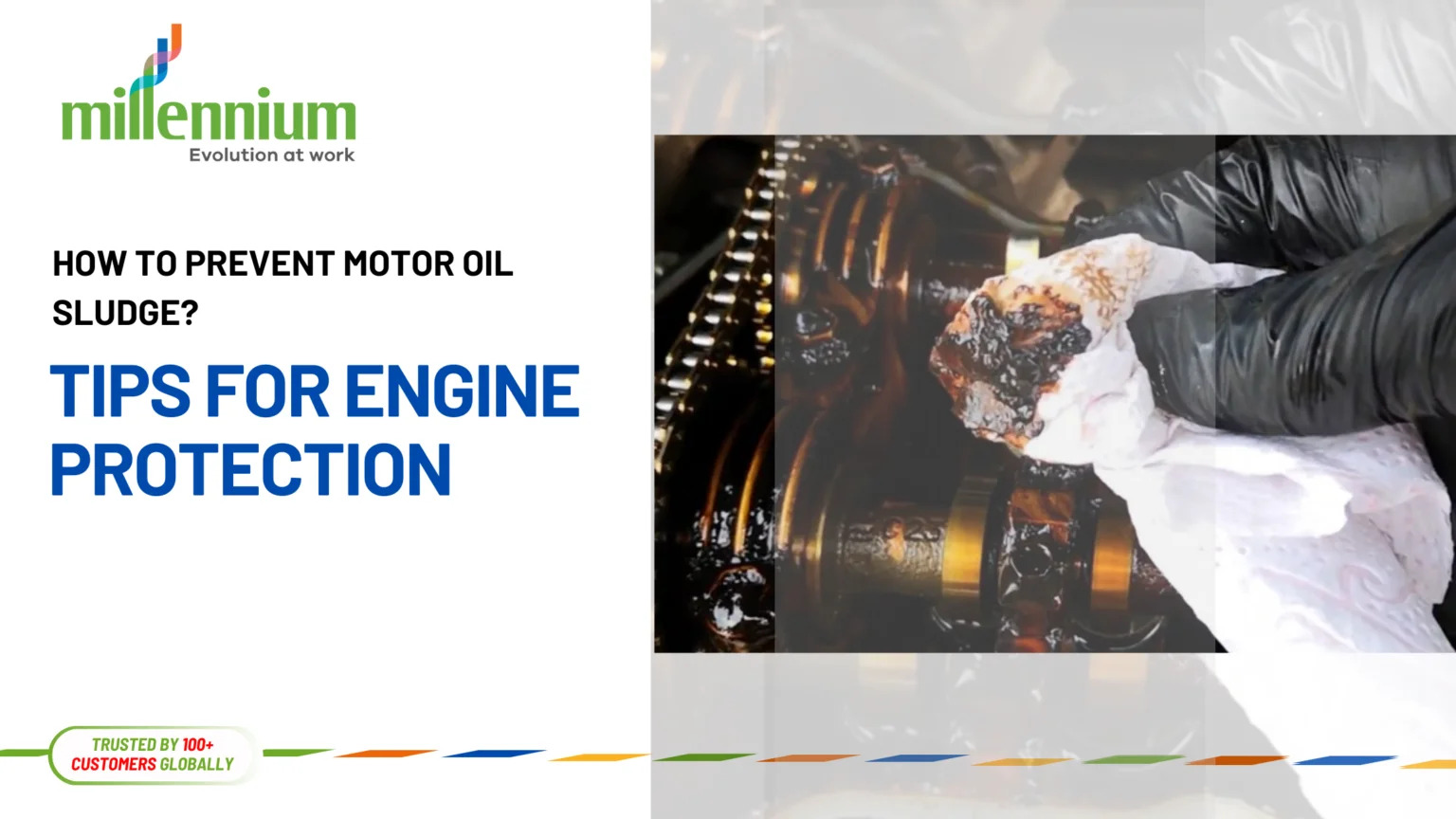Motor oil is essential for smooth engine operation, providing lubrication, heat control, and contaminant suspension. However, when oil degrades or becomes contaminated, it can turn into a thick, sticky mess known as motor oil sludge. This harmful buildup can compromise your engine’s health and performance. Understanding its causes, symptoms, and prevention is crucial for any vehicle owner who wants to avoid costly engine repairs.
What is Motor Oil Sludge?
Motor oil sludge is a semi-solid, tar-like deposit formed when oil thickens due to oxidation, heat exposure, or contamination. Unlike regular oil, sludge loses its lubricating properties and adheres to engine components, particularly in areas with limited oil circulation. It typically accumulates in oil passages, the crankcase, and under valve covers, restricting oil flow and leading to overheating or even engine seizure in extreme cases.
Sludge isn’t just dirty oil—it’s a byproduct of chemical breakdown and often a sign of long-term neglect. Once it forms, it can trigger a chain reaction of failures, reducing engine efficiency, increasing wear, and eventually leading to engine failure if not addressed.
Common Causes of Motor Oil Sludge
Several factors contribute to sludge buildup, often working together to accelerate the problem. Some common causes of motor oil sludge include:
- Extended Oil Intervals Beyond Manufacturer Recommendations: Skipping or delaying oil changes causes the oil to lose its detergents and oxidation inhibitors, allowing sludge to form.
- Low-Quality or Incompatible Oil: Using cheap or incorrect oil for your vehicle can result in poor thermal stability and inadequate cleaning action.
- Contaminants from Combustion: By-products such as soot, fuel dilution, and condensation mix with oil and settle when the engine is frequently shut off before reaching optimal temperature.
- Urban Driving Habits: Stop-and-go traffic, short commutes, and excessive idling promote cooler engine temperatures and prevent the oil from fully circulating and burning off moisture.
- Poor Crankcase Ventilation: A faulty PCV system traps moisture and combustion gases inside the engine, accelerating sludge formation.
Signs of Motor Oil Sludge in Your Engine
Identifying sludge early can help avoid more serious issues. Some warning signs include:
- Visible Deposits Inside the Engine: When checking under the oil cap or during servicing, sludge may appear as dark, gooey clumps.
- Slow or Irregular Oil Drainage: During oil changes, if the oil drips slowly or unevenly, sludge may be obstructing oil passages.
- Low Oil Pressure Warning: Sludge can block oil pathways, causing pressure to drop and triggering dashboard alerts.
- Rough Engine Performance: Sludge buildup can cause lifter noise, ticking, or hesitation during acceleration due to poor lubrication.
- Excessive Oil Consumption: Sludge can restrict oil return paths, causing oil to pool in the valvetrain and burn off prematurely.
How to Prevent Motor Oil Sludge
Proactive maintenance is the best way to prevent sludge from forming in the first place. Here’s how:
- Change Oil on Time, Every Time: Stick to a strict maintenance schedule based on time or mileage. Use the interval suggested in your owner’s manual, or shorten it for harsh conditions.
- Use Engine-Specific, High-Quality Oil: Always choose oil that matches your vehicle’s viscosity and certification requirements. Synthetic oils offer better thermal resistance and sludge protection than conventional ones.
- Keep Your Engine at Operating Temperature: Longer drives allow the oil to circulate fully and burn off contaminants. Avoid excessive short trips whenever possible.
- Maintain a Clean PCV System: Replace the PCV valve as recommended to ensure proper vapor flow and prevent internal moisture buildup.
- Monitor for Coolant Leaks: Coolant contamination in oil can lead to sludge quickly. If you see milky oil on the dipstick or smell sweet exhaust, inspect for leaks immediately.
- Avoid Additives Unless Recommended: Some aftermarket additives can destabilize oil chemistry. Only use those approved by your engine manufacturer.
How to Remove Existing Motor Oil Sludge
If sludge has already developed, don’t panic—early intervention can still save the engine. Here are your options:
- Professional Engine Cleaning Services: Many workshops offer sludge removal through chemical flushes or specialized cleaning tools. This is safer than DIY for heavily affected engines.
- Engine Flush Additives: For mild to moderate sludge, an oil additive can be used before the next oil change to break down deposits. Follow usage instructions carefully.
- High-Detergent Oils: Some oils contain extra cleaning agents. Switching to these for a few short oil change intervals (1,000–2,000 km) helps lift residual sludge.
- Mechanical Cleaning: Severe sludge may require disassembly of valve covers, oil pans, and pickup screens for manual removal. This is labor-intensive but effective.
- Monitor After Cleaning: Post-cleaning, observe oil pressure and engine performance. Residual debris may continue to circulate and require follow-up oil changes.
Conclusion
Motor oil sludge is a silent engine killer, but with consistent care and the right habits, it’s entirely preventable. Stick to quality oils, timely servicing, and smart driving, and your engine will reward you with longevity and reliable performance. If signs of sludge do appear, early detection and targeted cleaning can prevent permanent damage—saving your engine and your wallet in the long run.



